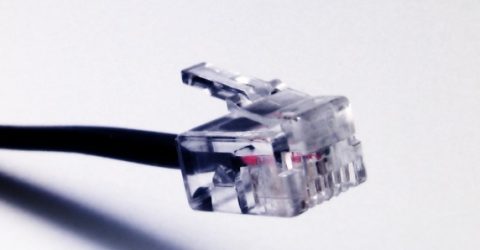The differences between Fibre to the Cabinet and Fibre to the Premises

When choosing a new broadband provider, we don’t tend to consider the infrastructure beyond our homes.
However, the cabling leading into our properties has a significant impact on our overall consumer experience.
In essence, there are two forms of broadband connections – Fibre to the Cabinet and Fibre to the Premises.
The differences between these are outlined below.
Fibre to the Cabinet
Internet data is dispatched from servers around the world along ultra-fast fibre-optic cables.
Within milliseconds, these data packets will arrive at the green or grey cabinets bordering the pavement near your home.
These break data streams into individual connections for homes or offices, typically with one connection per address.
However, in many parts of the UK, this is the point where the ultra-fast fibre-optic cables end.
Copper phone line cables are often used to transfer data from the cabinets to specific properties – a legacy of a time when domestic phone lines were only used for voice calls.
Copper conveys data far more slowly than fibre optic cables, and this has a dramatic effect on the line speed you can enjoy – effectively limiting it to 76Mbps.
That should be sufficient for streaming Netflix in HD or working from home, but it’ll struggle to service multiple devices, especially at peak periods of internet activity.
Those copper phone cables are the responsibility of Openreach, an arms-length subsidiary of BT.
Despite receiving heavy criticism for its continuing use of copper cabling, Openreach insists it’s not economically viable to upgrade every home in the UK to a faster fibre connection.
However, it is currently installing 11,400 new fibre connections into residential homes every week, with over 27 million homes and business premises already connected.
This provides people with a very different kind of broadband experience…
Fibre to the Premises
Also known as FTTP, Fibre to the Premises sees fibre broadband cables extending directly into our homes and workplaces, eliminating any need for copper cabling.
If Openreach hasn’t cabled a particular area yet, other companies might have done.
Virgin Media’s network of subterranean end-to-end optical cables summons data at speeds of up to 300Mbps to around 60 per cent of UK households.
Other companies are rolling out their own cable networks, mainly in urban areas.
CityFibre is busily expanding a network that already reaches four million UK homes, delivering gigabit broadband speeds in partnership with Vodafone.
Arch-rival Hyperoptic is also rapidly expanding its presence in towns and cities from Brighton to Belfast, providing speeds it claims are 21 times faster than the UK average.
Like Virgin Media, both companies work with construction firms to pre-cable new sites, which is more cost-effective than retrospectively installing cables in established areas.
Hyperoptic and Virgin also sell directly to private customers, whereas CityFibre is more focused on wholesale networks and commercial applications.
Is Fibre to the Premises available in my area?
Most broadband providers rely on Openreach architecture, resulting in a two-speed service depending whether fibre broadband extends to the boundaries of your home.
Openreach offers a postcode search tool, to check whether full fibre broadband is in your neighbourhood.
If it’s not, you’ll have to make do with Fibre to the Cabinet speeds, or consider a dedicated cable service.
It’s possible to check whether your property is served by Hyperoptic here, while the Virgin Media website has an Enter Postcode box on most pages.






